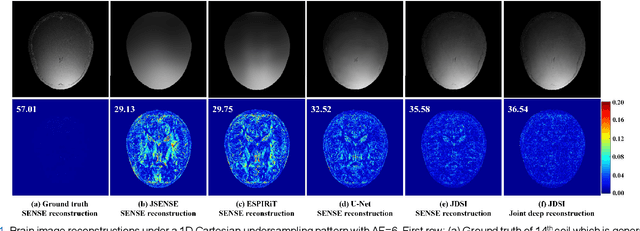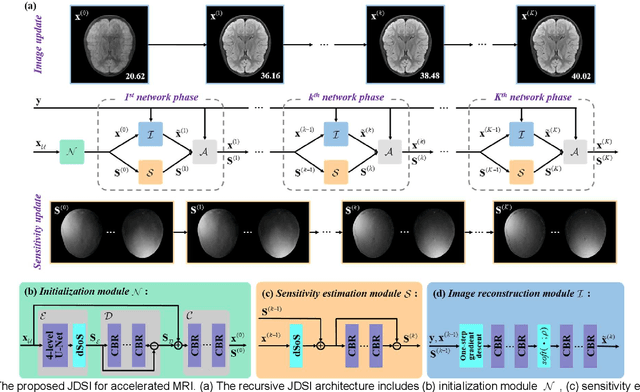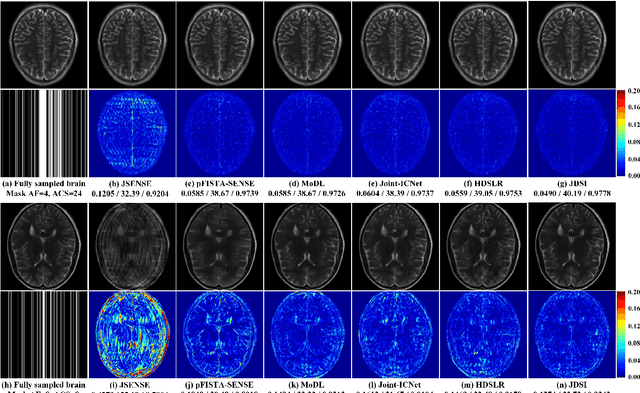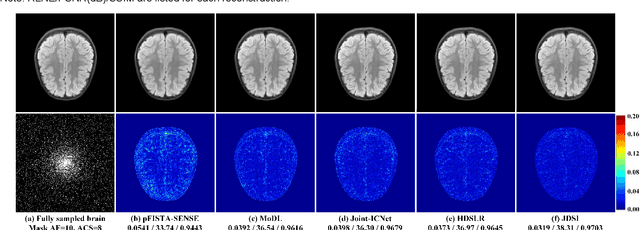Boxuan Shi
A Faithful Deep Sensitivity Estimation for Accelerated Magnetic Resonance Imaging
Oct 23, 2022



Abstract:Recent deep learning is superior in providing high-quality images and ultra-fast reconstructions in accelerated magnetic resonance imaging (MRI). Faithful coil sensitivity estimation is vital for MRI reconstruction. However, most deep learning methods still rely on pre-estimated sensitivity maps and ignore their inaccuracy, resulting in the significant quality degradation of reconstructed images. In this work, we propose a Joint Deep Sensitivity estimation and Image reconstruction network, called JDSI. During the image artifacts removal, it gradually provides more faithful sensitivity maps, leading to greatly improved image reconstructions. To understand the behavior of the network, the mutual promotion of sensitivity estimation and image reconstruction is revealed through the visualization of network intermediate results. Results on in vivo datasets and radiologist reader study demonstrate that, the proposed JDSI achieves the state-of-the-art performance visually and quantitatively, especially when the accelerated factor is high. Additionally, JDSI owns nice robustness to abnormal subjects and different number of autocalibration signals.
A Paired Phase and Magnitude Reconstruction for Advanced Diffusion-Weighted Imaging
Mar 28, 2022



Abstract:Multi-shot interleaved echo planer imaging can obtain diffusion-weighted images (DWI) with high spatial resolution and low distortion, but suffers from ghost artifacts introduced by phase variations between shots. In this work, we aim at solving the challenging reconstructions under severe motions between shots and low signal-to-noise ratio. An explicit phase model with paired phase and magnitude priors is proposed to regularize the reconstruction (PAIR). The former prior is derived from the smoothness of the shot phase and enforced with low-rankness in the k-space domain. The latter explores similar edges among multi-b-value and multi-direction DWI with weighted total variation in the image domain. Extensive simulation and in vivo results show that PAIR can remove ghost image artifacts very well under the high number of shots (8 shots) and significantly suppress the noise under the ultra-high b-value (4000 s/mm2). The explicit phase model PAIR with complementary priors has a good performance on challenging reconstructions under severe motions between shots and low signal-to-noise ratio. PAIR has great potential in the advanced clinical DWI applications and brain function research.
 Add to Chrome
Add to Chrome Add to Firefox
Add to Firefox Add to Edge
Add to Edge